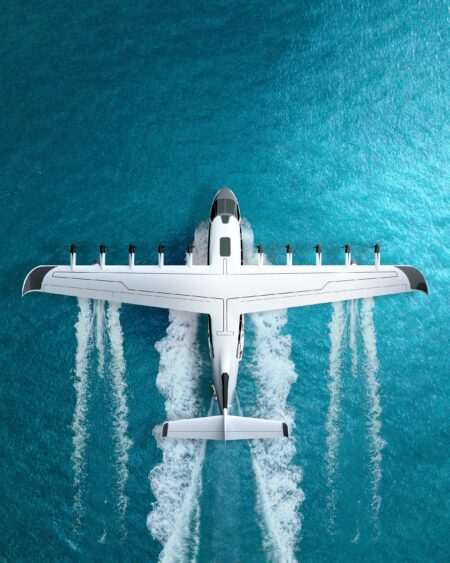Words | Tom Wadlow
While commercial aviation ground to a halt through much of 2020, the Covid-19 pandemic has shifted the dial in the business air travel sector significantly.
The global crisis saw many first-time users begin to realize the benefits of business aviation, such as the flexibility, safety and control it provides. This has resulted in a cohort of converted customers that previously had the means to fly privately, but didn’t have the inclination.
Interestingly, this trend is not showing any signs of slowing during 2022.
The number of ultra high-net-worth individuals (UHNWI) is expected to grow at rates exceeding those of the past five years, creating new opportunities in previously untapped markets. Meanwhile, manufacturer backlogs, which are currently around 18–20 months, present another reason for the post-pandemic momentum to continue thanks to the acquisition of pre-owned aircraft.
“Many individuals who require a jet now will continue turning to the pre-owned market to fulfil their aircraft needs,” explains Massimo Burotti, sales director at US-based jet sales firm Jetcraft.
“We expect the growing aircraft buyer pool will only accelerate business aviation’s success into 2022 and beyond. Our five-year pre-owned market outlook expects sales activity to remain high – we forecast 12,261 pre-owned transactions to result in US$57.2 billion in revenue during the next half decade.”
Alongside this, the market for large bizjets is also gathering momentum. According to Burotti, this is being driven by a growing interest in long-range travel as borders continue to open up around the world, with large jets offering the opportunity to fly further and rekindle global business relationships with face-to-face meetings.
“We’re seeing an interest in large jet ownership among first-time buyers who previously opted to start with smaller aircraft, such as a Cessna Citation or Embraer Phenom,” Burotti continues.
“These buyers are now making the jump straight to larger, midsize or long-range jets. With the UHNWI population set to continue to grow globally in numbers and wealth, this is likely to extend the demand for large jets which is forecasted to reach 1,594 pre-owned transactions between 2022-2025, according to our data.”
The FBO perspective

Burrotti’s thoughts are echoed in FBO circles. Marty Kretchman is senior vice president of operations planning at Signature Aviation, which is one of two major FBOs operating out of London Luton Airport in the UK. The FBO handles large numbers of private jets.
Indeed, Kretchman is witnessing first-hand how many first-time flyers are keen to keep flying privately. “While companies that operate aircraft privately for the benefit of their leadership teams will continue to use a mix of commercial and private to meet their travel schedules,” he adds.
“Time savings, flight duration, and number of passengers are critical factors that get weighed up when dispatching a business jet – but now we can factor in the productivity, safety and security benefits that are hard for commercial airlines to match.”
The current and projected increase in large business jet traffic carries several implications for FBOs such as Signature, the world’s largest provider of private aviation real estate.
Kretchman believes mid to large jets will continue to drive demand for hangar space. This trend will influence the design of new facilities as well as the renovation of existing facilities, which will need to incorporate more efficient construction and accommodate taller hangar doors.
Here, ongoing dialogue between FBO, tenant and aircraft manufacturers is critical if all stakeholder needs are to be met moving forwards.
“Signature makes investment decisions that span decades,” Kretchman says, “and so as we scale our infrastructure to meet the industry’s growth, we are considering the best use of a parcel of land or a hangar for 20 or 30 years into the future.
“We regularly collaborate with OEMs and aircraft operators to stay ahead of the curve, and our recently announced partnership with Bombardier is a great example of how industry leaders can innovate for the benefit of their mutual customers.”
The partnership will see Signature providing dedicated concierge services at Bombardier service centers across the USA and Europe, while the aircraft OEM is set to station mobile response teams at various Signature FBOs.
The manufacturer’s perspective

Indeed, from Bombardier’s point of view, collaboration with FBOs also helps to steer strategy, especially in relation to the design of bizjet aircraft.
Bombardier contacts airports and FBOs to gain knowledge about passenger preferences for base airports and frequently traveled locations. These conversations are continually informing the design of aircraft such as the Global 7500, which is about to hit the century milestone in terms of customer deliveries. Part of the Global aircraft family – which recently celebrated its thousandth delivery – the 7500 is able to connect cities as far away from each other as Sydney and Detroit and comprises four dedicated living spaces, as well as a separate crew area.
Laurence Casia, industrial design and cabin innovation manager at Bombardier, says, “Customers generally have been looking for bigger cabins, not necessarily to take on more passengers, but to have more of a spacious, home-like environment, especially as business jets are increasingly able to fly longer and connect more destinations without the need to make stops. Longer flight times means customers want to be more comfortable and productive while in the air.”
Air quality is unsurprisingly another hot topic among aircraft designers because of Covid-19 transmission.
“The Global 7500 is equipped with our unique Pũr Air system,” Casia continues. “This is a sophisticated air purification and circulation system featuring an advanced HEPA filter that rapidly purifies and replaces the cabin air – the same technology is used to clean air in hospital rooms.”
Casia also mentions another interesting evolution around wing design. Here, Bombardier’s large business aircraft are fitted with a Smooth Flex system that offers high speed capabilities and enhanced low speed handling, an important feature when using airports with shorter runways.
However, arguably the most influential trend shaping Casia’s role currently is sustainability.
“Sustainability is a key focus when designing new aircraft, whether that’s using the latest engine technology to reduce fuel consumption or ensuring we meet future emissions and noise targets,” he adds. “On top of this, new aircraft are subject to a full lifecycle analysis to meet our own stringent targets for end-of-life considerations.”
Bombardier was the first and is still the only business jet manufacturer to have released an Environmental Product Declaration (EPD) for an aircraft model with the Global 7500. An EPD is a globally recognized, standardized and verified way of quantifying and communicating the environmental impact of a product across its lifecycle, and involves deep collaboration up and down the supply chain to implement.
“In product development, Bombardier has established environmental sustainability requirements and has worked with each supplier to collect an unprecedented amount of data to perform the lifecycle analyses required for the publication of EPDs,” Casia says. “We’re also using this data to proactively set improvement targets for future programs.”
Bombardier is also a keen advocate of sustainable aviation fuel, part of the partnership with Signature being the provision of such fuels at several sites in the USA and across Europe.
 “We’re seeing operators becoming increasingly concerned about their impact on the environment, as larger aircraft generate larger carbon footprints,” Kretchman adds. “We’ve been the industry’s strongest advocate of introducing sustainable aviation fuels through our Signature Renew programme, which is reducing CO2 emissions by 25% for every gallon of Jet A consumed.”
“We’re seeing operators becoming increasingly concerned about their impact on the environment, as larger aircraft generate larger carbon footprints,” Kretchman adds. “We’ve been the industry’s strongest advocate of introducing sustainable aviation fuels through our Signature Renew programme, which is reducing CO2 emissions by 25% for every gallon of Jet A consumed.”
Future market need
These fuel-based initiatives, according to Burotti, are likely to continue gathering momentum in the coming years as the aviation sector comes under the sustainability microscope. Impressive progress has already been made, with Jetcraft estimating that business aviation has delivered a 40% fuel efficiency improvement over the past 40 years.
And such figures are likely to improve further with more widespread adoption of sustainable aviation fuels and other initiatives such as carbon offset schemes.
“Globally, total carbon dioxide emissions from business aviation are approximately 2% of all aviation and 0.04% of global man-made carbon emissions,” Burotti says. “The industry can and should continue to prioritize this topic and there are several initiatives in the works, including carbon offsetting, then use of alternative jet fuels and hybrid and electric aircraft programs.”

The latter in particular carries the potential to help decarbonize the bizjet sector. “We are observing efforts to create more sustainable business aircraft through electric aviation,” Burotti continues. “Planes that can fly up to nine passengers on electricity over fossil fuels are already in the test flight phase, while electric vertical take-off and landing aircraft promise green solutions to urban congestion in the not-too-distant future.
“OEMs are making sustainability a key element of future aircraft designs and I’m optimistic that we will see sustainability driven aircraft and vertical lift solutions in
our lifetime.”





